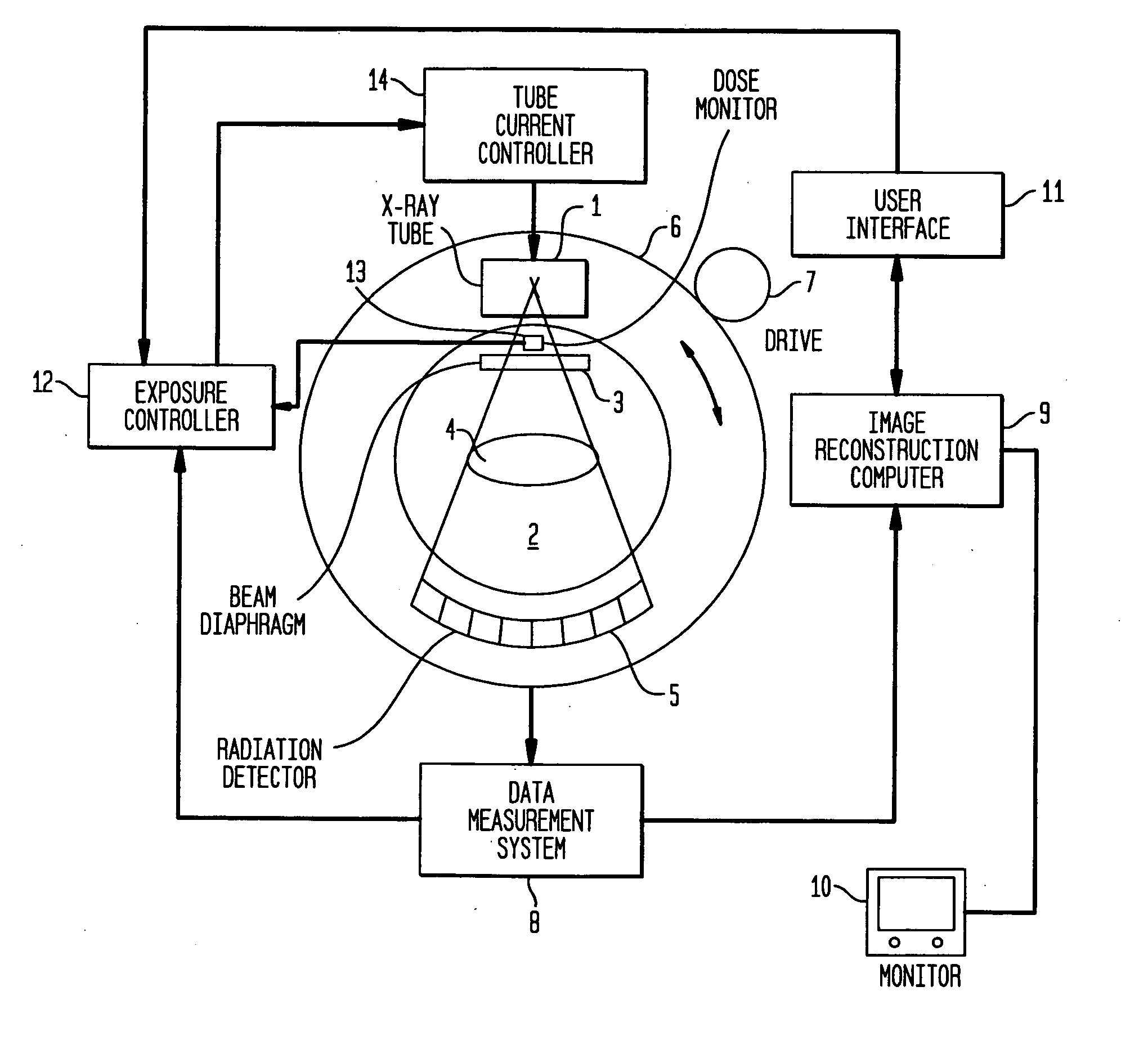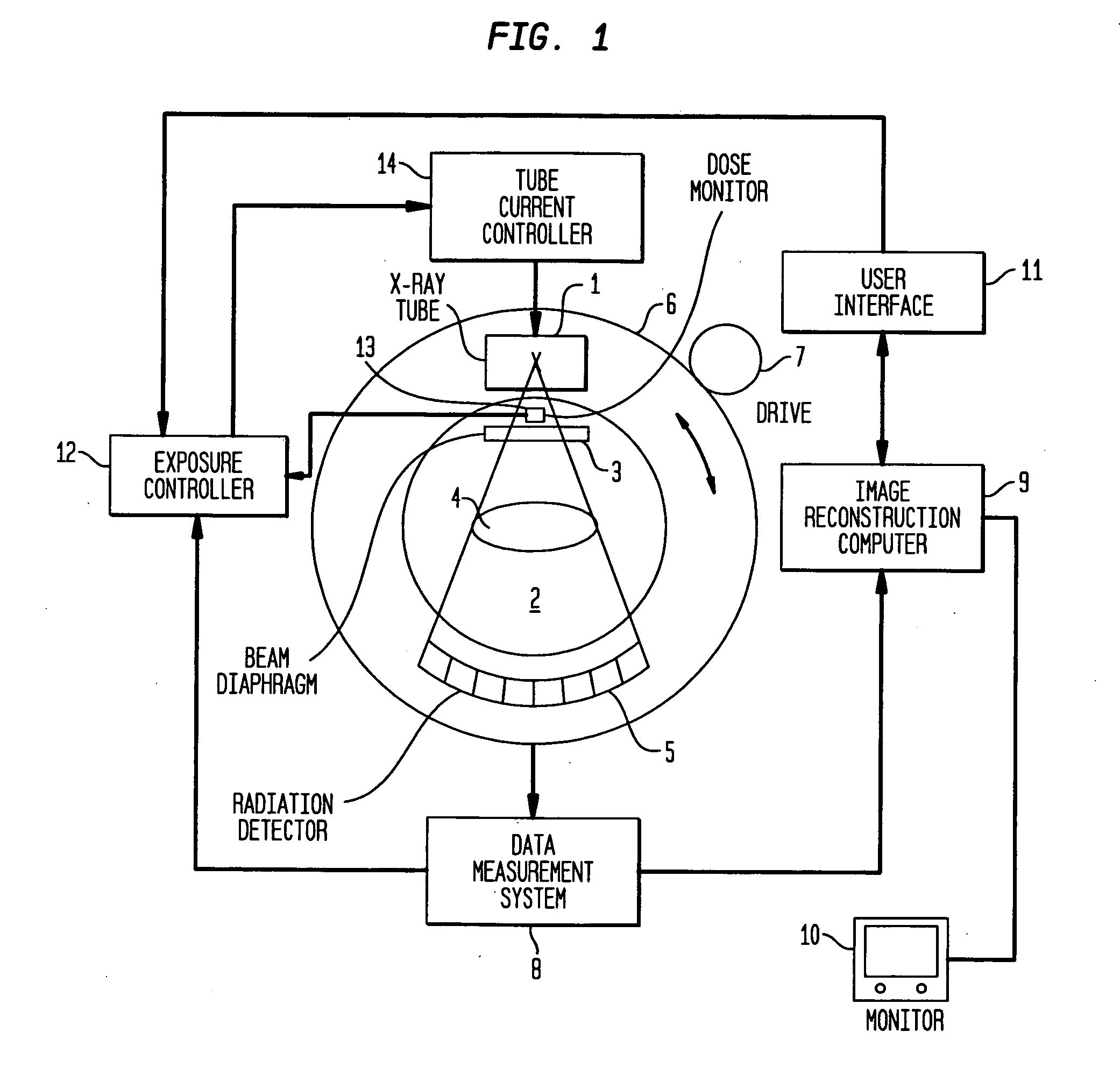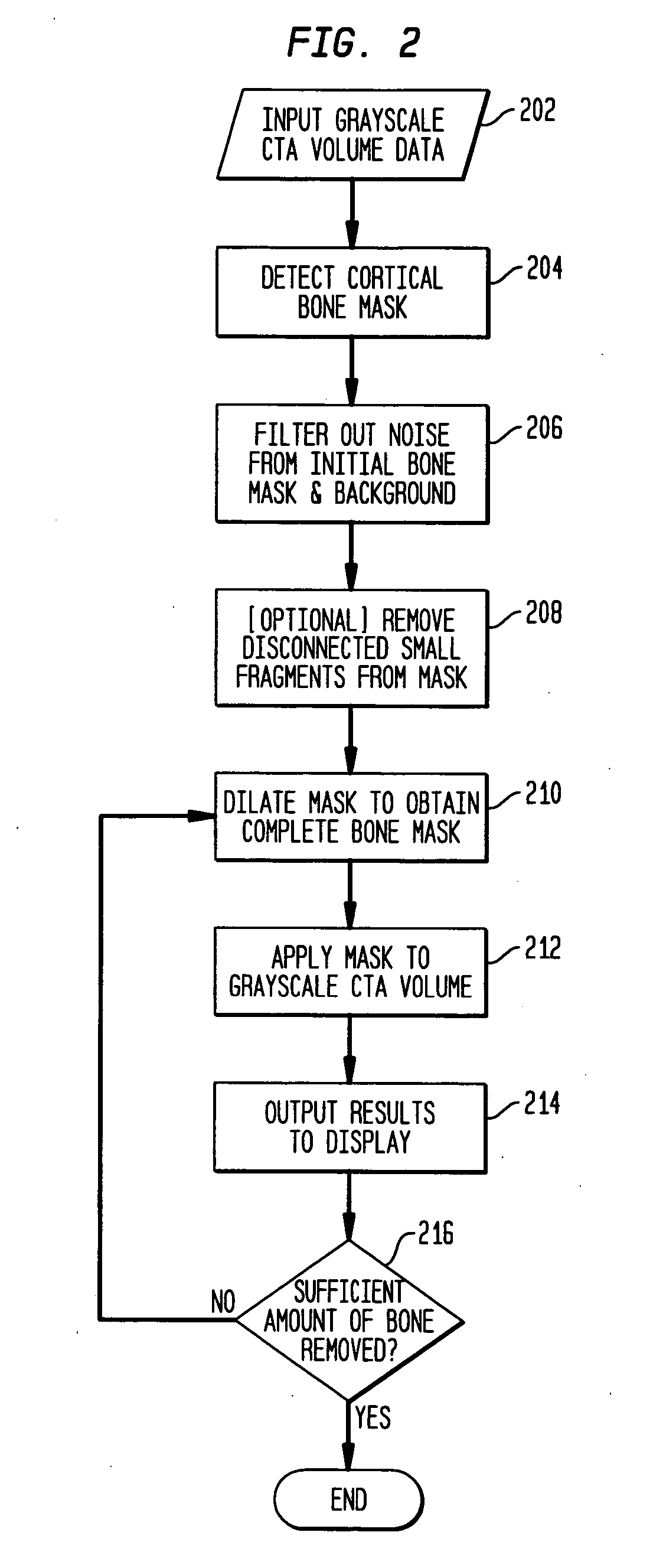System and method for automatically segmenting bones in computed tomography angiography data
a computed tomography and bone structure technology, applied in the field of automatic segmentation of bones in computed tomography angiography data, can solve the problems of ineffective use of methods, inconvenient use of methods, and inability to automatically segment bones,
- Summary
- Abstract
- Description
- Claims
- Application Information
AI Technical Summary
Benefits of technology
Problems solved by technology
Method used
Image
Examples
Embodiment Construction
[0016] The present invention is directed to a system and method for automatically segmenting bones in Computed Tomography Angiography (CTA) data. FIG. 1 illustrates a conventional CT system with which the present invention can be practiced. The CT system includes an X-ray tube 1 which emits an X-ray beam 2 from a focus. The X-ray beam 2 is gated by a beam diaphragm 3, and proceeds through an examination subject 4, so as to be incident on a radiation detector 5. The X-rays incident on the radiation detector 5 are attenuated by the examination subject 4, and the radiation detector 5 generates electrical signals corresponding to the attenuated X-ray incident thereon.
[0017] The X-ray tube 1 and the radiation detector 5 are mounted on a rotatable gantry 6, which is rotated by a drive 7. The X-ray beam 2 is therefore caused to rotate around the examination subject 4, so that a series of projections, respectively obtained at different projection angles, are made. Each projection has a dat...
PUM
 Login to View More
Login to View More Abstract
Description
Claims
Application Information
 Login to View More
Login to View More - R&D
- Intellectual Property
- Life Sciences
- Materials
- Tech Scout
- Unparalleled Data Quality
- Higher Quality Content
- 60% Fewer Hallucinations
Browse by: Latest US Patents, China's latest patents, Technical Efficacy Thesaurus, Application Domain, Technology Topic, Popular Technical Reports.
© 2025 PatSnap. All rights reserved.Legal|Privacy policy|Modern Slavery Act Transparency Statement|Sitemap|About US| Contact US: help@patsnap.com



